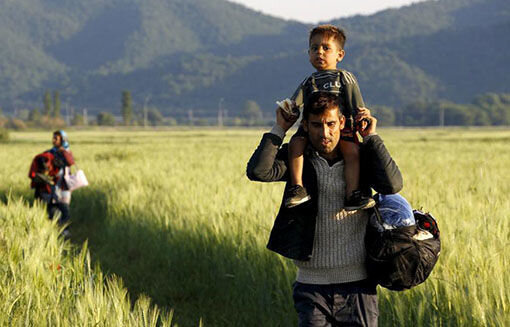Rural-to-urban migration down to zero: official

TEHRAN – For the first time in the country, the migration of people from rural areas to cities has reached zero, Mohammad Omid, the vice president for rural development, has said.
A total of 220 trillion rials (nearly $5.6 billion at the official rate of 42,000 rials) has been approved for the development of villages in the current year (March 2020-March 2021), IRIB quoted Omid as saying.
Some 140 trillion rials (about $3.3 billion at an official rate of 42,000 rials) have so far been spent, he noted, adding, the unemployment rate in rural areas has reached 7.4 percent, which has decreased by over one percent compared to last year.
Rural development
Many efforts have been made over the past couple of years by the government to support villagers and slow down the trend of migration from rural areas to cities.
Rural tourism, agritourism, religious tourism, and ecotourism are alternatives or complementary economic activities that could further stimulate rural development while decreasing rural community dependency on one main economic sector (agriculture, forestry, energy, or mining).
In Iran, October 6 is celebrated each year as the National Day of Villagers and Nomads.
Currently, 26 percent of the country's population lives in villages, Mohammad Omid, the vice president for rural development, has said. He added that around 39,000 villages have more than 20 households and 23,000 villages have less than 20 households.
Thus, more than 97 percent of the country's rural population lives in villages with over 20,000 households.
Main reasons behind migration
Shahla Kazemipour, a demographer and sociologist, said in October 2019 that over 53 percent of Iran's population was living in rural areas some four decades ago, but urbanization has influenced rural demographic trends, decreasing the rural population to 20 million, representing 25 percent of the country’s population.
Referring to the three main reasons behind migration from villages to urban areas, she noted that the population in Iran was associated with high growth due to increased fertility, but since the rural economy is based on agriculture, rural areas lost attraction due to lack of farms.
Eventually, a population overflow happened in urban areas, that is, the population grew but the rural economy was not capable of attracting more villagers, so the villagers migrated to the cities, she said, adding, on the other hand, a high concentration of population in rural areas caused some populated ones to become cities.
Pointing to another factor contributing to the increased urbanization rate, she noted that in the period when cities expanded due to population growth and migration, some surrounding villages joined the urban complex, and the urbanization rate reached up to 75 percent.
About 24 percent of Iran's population is less than 15 years old, and some 6 percent is above 65 years old, while 70 percent of the population is 15-65 years old, she announced.
According to statistics, rural areas are holding a higher population of younger people, because fertility is still slightly higher than urban areas and migration from rural to urban areas generally occurs by the working population, in fact, about 27 percent of the rural population is aging less than 5 years old, she explained.
Although statistics showed that only seven percent of the rural women are working, it can be argued that in fact out of the 6.4 million women aged 15 to 65, about 40 percent are active as many of whom are involved in farming, animal husbandry, and poultry,” she explained.
Referring to the healthcare among rural women, she said that the country’s mortality rate is 5 per 1,000, but statistics show that the mortality rate is higher among men, with a rate of 6 per 1,000 while the figure is less than 5 per 1,000 among women.
Abolfazl Razavi, the deputy vice-president for rural development and deprived areas, has said that some 60 percent of migrations from rural to urban areas are caused by the lack of appropriate jobs and sufficient income for educated people.
Measures taken to reverse migration by making people move to rural areas including providing facilities and sustainable job-generating has increased the rural population in some provinces of the country, he highlighted.
FB/MG
Leave a Comment